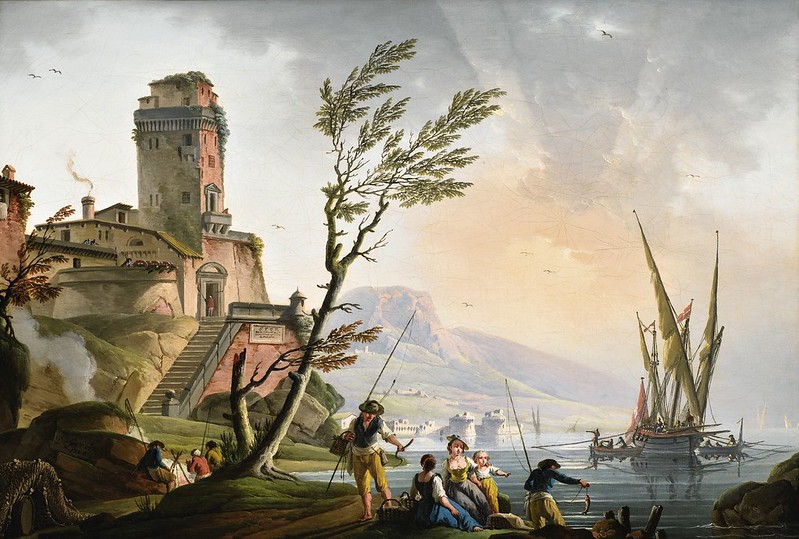Domènec Terradellas (1713-1751) - Sinfonia (Obertura) 'Sesostri, re d'Egitto' (1751)
Performers: Concerto Brandenburg; Gregor DuBuclet (director)
Painting: Charles François Grenier de Lacroix, dit Lacroix de Marseille (1700-1782) - Mediterranean landscape
Further info: Domènec Terradellas (1713-1751) - Nocturna Procella
---
Spanish composer. He probably received part of his musical instruction
from Francese Valls, choirmaster of Barcelona Cathedral. In 1732 he
moved to Italy. Sponsored by the Prince of Belmonte, he registered as a
student at the music conservatory Poveri di Gesù Cristo in Naples on 23
May, at the same time committing himself to stay in the conservatory,
where he studied with Francesco Durante, and to contribute to its music
for a period of six years. His first important work, the oratorio
Giuseppe riconosciuto, was written in 1736 while he was still a student.
His professional career as a dramatic composer began in Carnival 1739
with the production in Rome of his heroic opera Astarto. He then
returned to Naples where he wrote his second oratorio, Ermenegildo
martire (performed 1739), and his single comic opera, Gl’intrichi delle
cantarine (performed 1740). In 1743 he achieved his first outstanding
success with the presentation in Rome of his opera Merope. The
Neapolitan envoy at the papal court, Cardinal Acquaviva, was so
impressed that he wrote a strong recommendation for the composer to the
court authorities in Naples, claiming that Merope had obtained a success
in Rome ‘the like of which no one can remember for many years’. But the
Neapolitan court took no interest, and Terradellas stayed in Rome where
he secured an appointment at the church of S Giacomo degli Spagnoli.
During his years in this post (1743-5) he wrote many church
compositions. According to Carreras, he left S Giacomo in 1745 because
of differences with his colleagues. In 1746 he went to London where, in
the course of a winter season, he composed two operas and arranged a
pasticcio, all for the King’s Theatre. In spring or early summer 1747 he
returned to the Continent by way of Paris. By 1750 he was back in
Italy. During carnival that year he was at Turin for the production of
his new opera Didone, and in May he was at Venice for the production of
another new opera, Imeneo in Atene. Sesostri re d’Egitto, his last
opera, was performed with great success in Rome in Carnival 1751. The
following May he died; how he died is still a mystery. The lurid report
in the Allgemeine musikalische Zeitung of 12 March 1800 that, after a
period of intense rivalry between him and another composer, Nicolò
Jommelli, he was murdered and his body thrown into the Tiber, is
nowadays discounted.

Cap comentari:
Publica un comentari a l'entrada